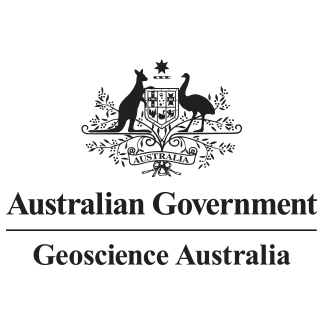Full description
This record has been superseded by eCat 150381The High and Low Tide Composites product is composed of two surface reflectance composite mosaics of Landsat TM and ETM+ (Landsat 5 and Landsat 7 respectively) and OLI (Landsat 8) surface reflectance data (Li et al., 2012). These products have been produced using Digital Earth Australia (DEA). The two mosaics allow cloud free and noise reduced visualisation of the shallow water and inter-tidal coastal regions of Australia, as observed at high and low tide respectively (Sagar et al., 2018).
The composites are generated utilising the geomedian approach of Roberts et al (2017) to ensure a valid surface reflectance spectra suitable for uses such as habitat mapping. The time range used for composite generation in each polygon of the mosaic is tailored to ensure dynamic coastal features are captured whilst still allowing a clean and cloud free composite to be generated. The concepts of the Observed Tidal Range (OTR), and Highest and Lowest Observed Tide (HOT, LOT) are discussed and described fully in Sagar et al. (2017) and the product description for the ITEM v 1.0 product (Geoscience Australia, 2016).
Lineage
Maintenance and Update Frequency: asNeededCreated: 09 05 2017
Issued: 01 11 2017
Modified: 01 11 2017
Modified: 19 01 2018
Modified: 20 02 2018
Modified: 23 04 2018
Modified: 26 04 2018
Modified: 28 06 2018
Modified: 28 06 2018
Modified: 03 05 2019
Modified: 03 05 2019
Modified: 20 05 2019
Modified: 20 05 2019
Modified: 23 05 2019
Modified: 23 05 2019
Data time period: 16 08 1986 to 31 07 2017
Spatial Coverage And Location
text: westlimit=-1943830.00; southlimit=-1119030.00; eastlimit=2170690.00; northlimit=-4856630.00
User Contributed Tags
Login to tag this record with meaningful keywords to make it easier to discover
THREDDS link to data
uri :
https://thredds.nci.org.au/thredds/catalogs/fk4/hltc_2_0.xml![]()
Product description
uri :
https://d28rz98at9flks.cloudfront.net/113843/HLTC_Product_Description.pdf![]()
Superseded by eCat 150381
- DOI : 10.4225/25/5A615705D20F7

- URI : pid.geoscience.gov.au/dataset/ga/113843

- global : 2a595dfa-2f1f-4167-aca8-89d788cb1efb


